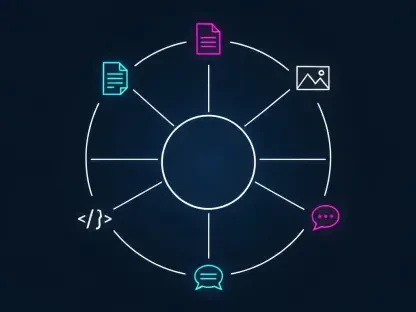As artificial intelligence (AI) technology progresses rapidly, the European Union (EU) AI Act serves as a transformative regulatory effort seeking to balance crucial aspects of cybersecurity and innovation. This legislative framework aims to structure AI development through comprehensive guidelines, addressing growing concerns about AI’s dual potential—its ability to protect against cyber threats, yet simultaneously empower malicious actors. By proposing measures that require developers to classify AI systems by risk and ensure secure implementation, the Act intends to foster trust in AI technologies while preventing exploitation. Both oceans of opportunity and tides of challenge have emerged with this Act’s enactment, stimulating debate on its practical impact on businesses eager to harness AI for defense and growth while ensuring compliance with EU standards.
Assessing AI’s Dual Role in Cybersecurity
Potential for Cyber Protection
Artificial intelligence systems have become instrumental in detecting, analyzing, and neutralizing cyber threats by processing massive datasets swiftly and accurately. These systems continuously evolve, learning from past incidents to predict future risks effectively. The EU AI Act recognizes the importance of AI in this domain, emphasizing the need to foster technologies capable of protecting critical infrastructure against sophisticated cyberattacks. It sets out clear guidance to ensure AI systems are adequately trained to identify threats early and coordinates efforts across sectors to boost AI-fortified security measures. Furthermore, AI can automate traditional defense mechanisms, reducing human error significantly by swiftly counteracting malicious activities with precision.
Empowering Malicious Actors
While AI systems indeed offer protection, they inadvertently enhance the capabilities of cybercriminals, who exploit AI’s sophistication for their gain. These adversaries can harness AI to design automated tools that can launch more complex attacks than those familiar with traditional vectors. The EU’s regulatory framework underscores this risk by attempting to limit AI capabilities that could be misused and proposing stringent security testing to safeguard AI systems from such threats. However, the challenge remains that malicious actors do not operate under regulatory constraints, allowing them to innovate faster and adapt dynamically, potentially widening the gap with legitimate enterprises striving to combat these digital threats. Consequently, the AI Act aims to curb these risks by setting regulations that empower developers to balance capabilities responsibly while maintaining vigilant oversight.
Implications of the EU AI Act
Security Testing and Transparency
The EU AI Act features pivotal components, including mandatory security testing and enhanced transparency, to create an accountable AI development environment. Regular testing is deemed essential for identifying vulnerabilities that could be exploited by attackers, ensuring systems remain resilient against evolving cyber threats. The Act mandates AI developers to disclose system architecture details for accountability purposes, facilitating a better understanding and monitoring of these technologies’ deployment across different sectors. While fostering transparency can make AI systems more secure, it also poses risks if sensitive information leaks, potentially guiding bad actors toward exploiting known vulnerabilities. Thus, striking a balance between transparency and security remains a central concern as developers navigate compliance with the EU’s stringent criteria.
Compliance and Operational Challenges
Implementing the AI Act necessitates a series of compliance measures, which, while enhancing security posture, foreseeably slow down operational processes. Businesses, especially small and medium-sized enterprises (SMEs), may face obstacles in adapting to this regulatory framework owing to limited resources available for extensive testing and legal advice. Extended approval times for updates pose risks where vulnerabilities could be actively exploited by attackers before addressing them through regulatory processes. These compliance requirements could inadvertently compel security teams to prioritize meeting legal benchmarks, possibly overlooking emerging threats. Moreover, compliance patterns familiar to attackers could mean that similarly structured systems are vulnerable to predictively engineered exploits, reducing operational robustness.
Broader Technological and Legal Dynamics
Human Oversight and Social Engineering
The Act underscores the necessity for human oversight within AI decision-making processes, which introduces potential social engineering vulnerabilities. Attackers may target human reviewers responsible for system approvals, employing manipulation tactics to bypass intended security measures. Furthermore, fatigue from high-volume transaction monitoring might lead reviewers to automate approvals—a phenomenon observed in the banking sector with compliance lapses. By bridging AI efficiency and human discretion, the EU AI Act aims to ensure responsible AI deployment, urging developers to mitigate social engineering risks through robust user training and adaptive oversight protocols that counter potential threats efficiently.
Biometric and Dual-Use Systems
Restrictions imposed by the AI Act on biometric technologies reflect privacy concerns, significantly impacting law enforcement’s ability to track criminals through advanced surveillance methods. Limitations on such technologies diminish the capacity to use tools like facial recognition for monitoring and apprehending individuals linked to criminal activities. Additionally, constraints on dual-use AI systems complicate matters further by stifling innovation in defense tools with civilian potential benefits. Although military AI systems are excluded from the Act, the technology supporting their progress faces notable constraints—prompting discussions on the balance between privacy and security considerations within AI’s framework.
Future Perspectives and Strategy
Navigating Compliance and Innovation
The EU AI Act offers substantial insights into governing AI technology responsibly; yet, it presents compliance challenges, especially in terms of balancing agility with security. Businesses can proactively adapt Act guidelines, focusing on effective compliance practices as integral parts of AI design. Employing AI-driven tools for automated compliance management, maintaining regular engagement with regulatory bodies, and fostering industry collaborations to share insights and best practices are viable pathways to align compliance measures with technology’s evolving landscape. Such strategies aim to mitigate business risks without sacrificing security, ensuring innovators flourish within regulatory confines.
Achieving Synergy in AI Development
Artificial intelligence systems play a crucial role in identifying, analyzing, and neutralizing cyber threats by efficiently processing vast datasets. These systems are dynamic, constantly evolving by learning from previous incidents, which enhances their ability to foresee potential risks. The EU AI Act acknowledges AI’s significance in cybersecurity, stressing the necessity for developing technologies that safeguard vital infrastructure from advanced cyberattacks. It provides detailed guidance for ensuring AI systems are properly trained for early threat detection while promoting collaboration across different sectors to reinforce AI-enhanced security strategies. AI’s capability to automate conventional defense mechanisms diminishes human error considerably, enabling rapid and accurate responses to malicious activities. By integrating AI into cybersecurity frameworks, organizations can better protect critical infrastructure and maintain resilience against the growing complexity of cyber threats in today’s interconnected world.









